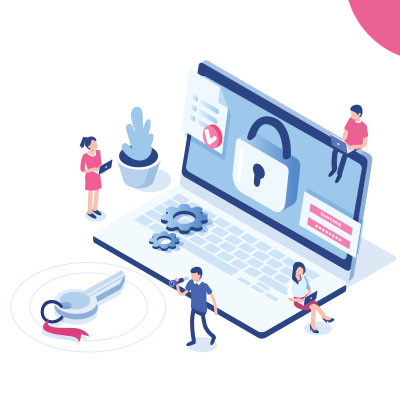All businesses use email to communicate, but too many organizations haven’t jumped on the encrypted email bandwagon yet. Encryption is incredibly helpful to keep networks and infrastructure secure, and it can do the same for your email solution. In fact, it is likely required to ensure the secure transfer of critical and sensitive information.
Coleman Technologies Blog
A successful business thrives on building beneficial relationships, which generates a lot of data and contracts that need to be efficiently shared and stored. While this might seem straightforward, leveraging today’s technology can significantly cut down on filing costs and enhance file-sharing efficiency. Let’s explore how.
Big data has become an invaluable asset, not just for large corporations but also for small businesses. Using the vast amounts of data your business creates to help you make more effective decisions is easier than ever. In this month’s newsletter, we’ll look at how small businesses are tapping into the power of big data:
Data is at the heart of all successful modern businesses. The information you collect and store can help you make better decisions, plan better strategies, and gain a competitive advantage. Let’s look at how your raw data can be refined into more meaningful insights through the use of business analytics tools.
Hackers are always on the lookout for personally identifiable information, or PII, as it’s an immensely lucrative resource. You’ll need to protect it if you want your business to continue operating safely and efficiently. Let’s go over what PII entails and what kinds of data you might find under this term.
Firewalls are a mainstay of network security. At its core, the firewall acts as a barrier between a trusted internal network and untrusted external networks, such as the Internet. Its primary function is to monitor and control incoming and outgoing network traffic based on predetermined security rules. Think of the firewall as a gatekeeper scrutinizing every packet of data that attempts to pass through. Let’s take a look at the different types of firewalls and some of their key functions.
Your business is likely subject to certain compliance laws and regulations depending on the type of data you collect from your clients or customers. Today, we want to emphasize the importance of your business considering regulation and compliance when managing its data and IT resources, as without doing so, you run considerable risk.
Your business’ data holds incredible potential for helping you improve operations, but only when it is leveraged properly. To this end, you have to identify specific metrics that you are working toward and establish how these metrics are helping you make strides forward. IT offers plenty of metrics to help you make better decisions about operational efficiency.
Cybersecurity is crucial for everyone to focus on, both in the professional environment and in their personal lives. That’s why I wanted to put together a list of cybersecurity practices you should encourage your team to follow when they aren’t in the office or working remotely, when their time is theirs.
Did you watch the big game this year? Chances are that if you did, you got to witness all of the spectacles that the event had to offer, including a lot of technology that enriched the experience, whether you realize it or not. The National Football League has implemented emerging technologies that have helped solve persistent challenges over the years. Let’s explore some of these technologies.
Small businesses, like any other organization, need to protect various types of data to ensure the security and privacy of their operations. The specific data that needs protection may vary depending on the nature of the business, industry regulations, and the types of transactions or customer interactions. Today, we thought we would go through some common data types that small businesses typically need to protect.
A digital twin could arguably be seen as a somewhat niche technological innovation. Regardless, they are an invaluable resource to quite a few industries that help the businesses that use them optimize their processes. Let’s go over what a digital twin is, and how it helps a few different business types meet their needs.
All it takes is one oversight to potentially undo any benefits your cybersecurity protections and other best practices may deliver. For instance, even if you have things like multifactor authentication in place, a phishing scam or even some malware varieties could potentially give an attacker access to your email… and all the data your messages contain, just sitting in your inbox.
Data Backup and Disaster Recovery are essential components of any modern business. As businesses become increasingly reliant on digital data, it's essential to have strategies in place to ensure that your data is safe and secure in the event of a disaster. Let’s cover the key components of an effective Disaster Recovery strategy to ensure the safety of your business' data backup. Read on to learn more about Disaster Recovery strategies and how to best protect your business data.
Your customers expect not to be inconvenienced when doing business with your organization. Small businesses can use new technology to meet these expectations by offering online ordering, mobile apps, and e-commerce platforms. Such innovations not only improve the customer experience but also expand a business' reach. Let’s look at some of the ways new technology can improve your business.
With things like cryptocurrencies and NFTs flooding the public awareness, the term “blockchain” has been brought up more than a few times. However, this association hardly covers what the blockchain is or what it is capable of.
Let’s briefly review what the blockchain really is, and what the technology can do.
Sports franchises have changed the way they use data to help them strategize. In the past, businesses used basic scouting to find and develop talent, but with the use of advanced analytics, not only can sports franchises improve their talent bases, they can save money and build a competitive advantage over organizations that aren’t so analytically inclined.





















